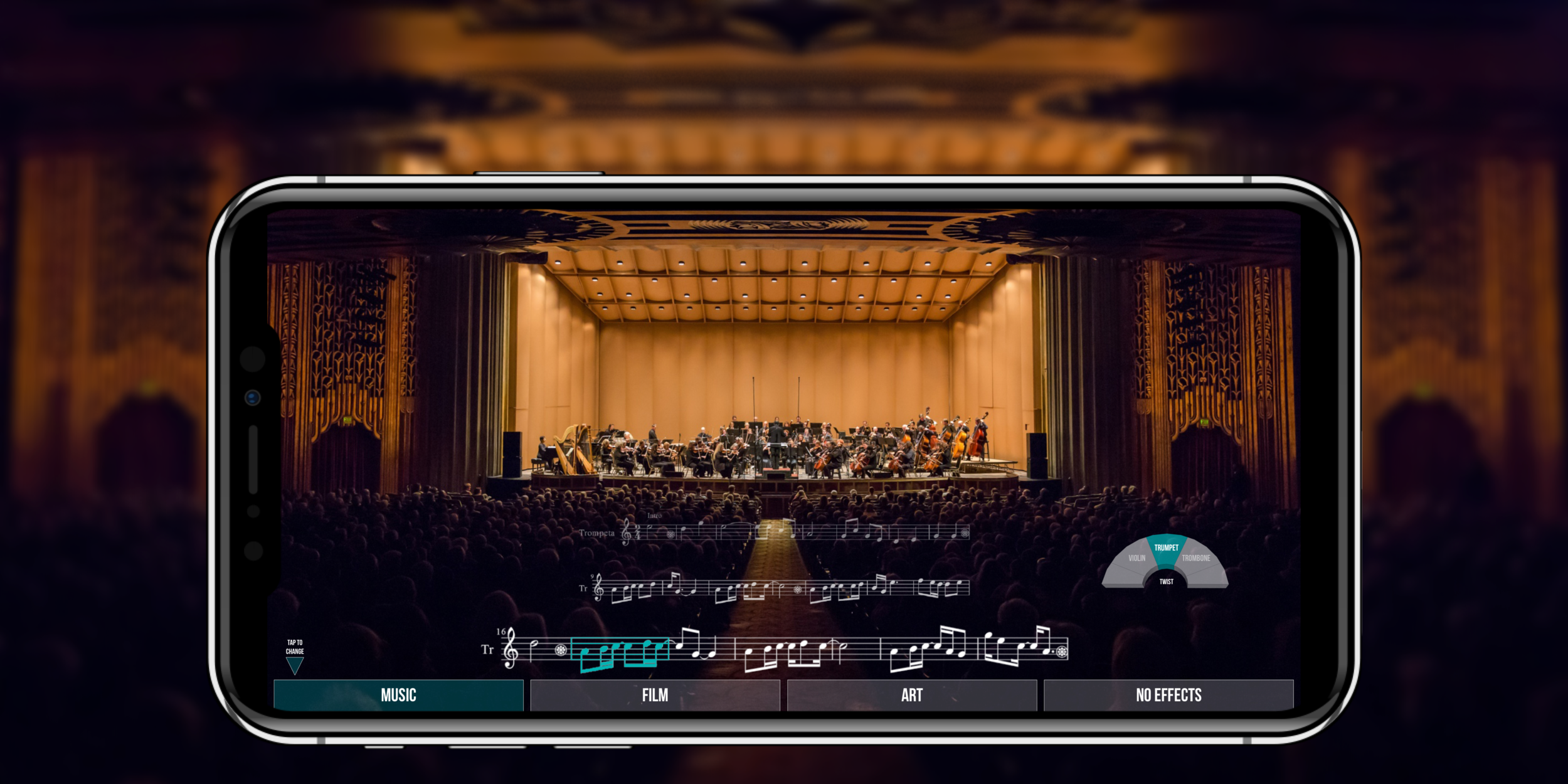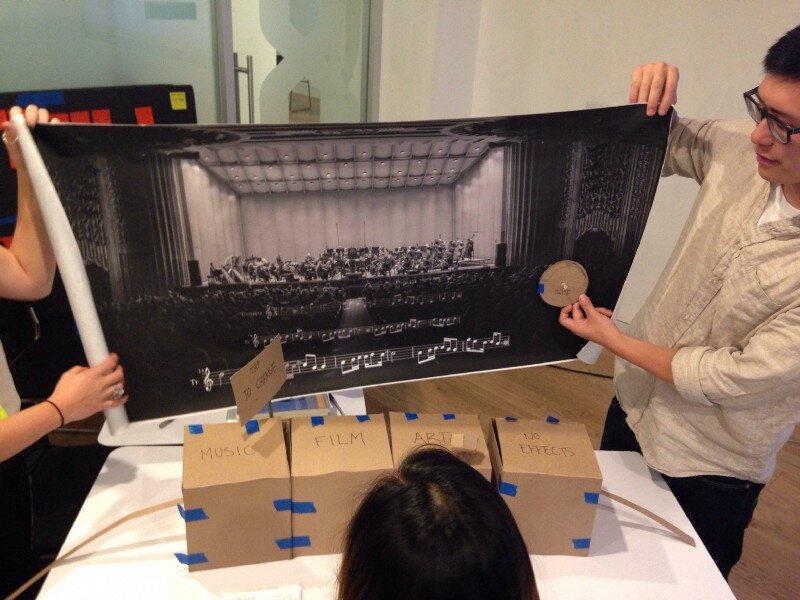Augmented Reality and the Oakland Symphony
The Oakland symphony wants to attract a new millennial audience without ruining a beloved experience for traditional fans.
I worked on a team of three as a UX designer with a primary focus on research, project management, and business strategy. This project lasted two weeks.
Our team leveraged augmented reality technology to create an interactive experience bold enough to attract new audiences while discrete enough to not disturb traditional symphony goers.

Why aren’t millennials going to the symphony?
Why haven’t previous tactics worked?
Many orchestras believe price and content are the primary barriers to entry for young audience members. To make their shows more accessible, these groups tend to create subscription models that offer truncated, cheaper show packages, or alter their schedule to make room for contemporary scores more familiar to younger audiences (think playing a movie score while the film plays in the background).
While these promotions might bring temporary success from the target demographic, they’re a bit divisive for symphony’s as a whole. Traditional fans tend to not more contemporary material, and the symphony still struggles to retain newer millennial audiences when Mozart comes around on the schedule.
What do millennials value in a live event/performance?
We sent a survey to a group of millennials who attended live events but had either never attended the symphony or only attended once in the past year to figure out what variables they considered when buying tickets.
Our results identified “hanging out with friends”, “seeing the artist perform in person”, and “the energy of the crowd” as the three most important variables considered when deciding to attend a show.
Now how might we integrate these values into a foreign experience?
Our Personas
The following personas were assembled using surveys and secondary research. The accompanying videos come from contextual inquiries at a San Francisco Symphony production of the Jaws score.
Persona 1
Has classical music experience
Would like to go to symphony because they enjoy the music
Might not have friends to accompany them
Persona 2
No classical music experience
No interest in going to the symphony
Likes other live events and hanging out in social environments
Enjoys drinking
Persona 3
Open to the symphony
Like the classical sound but usually don’t recognize the music
More likely to attend events when they recognize what’s being played
Conclusion
We came to augmented reality as a solution because it offers interaction, autonomy, accessibility, and can provide millennials with an experience that’s as unique or communal as they’d like it to be. Furthermore, in its simplest form, this can be seen as millennial movie night (an already popular solution), without subjecting the more traditional audience to the same, arguably distracting visuals.
If the Oakland Symphony chose to implement this AR solution using the inexpensive ZapBox, it would only cost them $30 per person, $15 less than the average ticket price.
We chose to keep our UI as simple as possible. The only controls on the screen are a standard navigation bar and a turn wheel that allow you to select visuals from a category and subcategory respectively. This is the standard UI for every ZapBox set, so its utility here creates a consistency between this and other AR experiences.
Film view
This setting will allow concert attendees to view a compilation of selected movie clips as the symphony plays in the background. Ideally, the movement of the film will match the movement and mood of the score to make for easy digestion and subtle education.
Weather view
In this setting the user can see the mood of the score animated by simulated weather patterns. A darker, more sullen moment might be produce a visual like the one above whereas a lighter selection can part the clouds to produce views of palm trees and the beach.
Ink and Water view
This setting is an abstract visual stimulant meant to provide attendees with a visual that’s less predictable, but eerily beautiful and susceptible to interpretation.
No Effects view
If the visuals become bothersome or distracting, attendees can always return to an unaltered view of the orchestra.
Next steps
After this pilot is introduced to the Oakland symphony, we’d like to play around with a more ambitious UI that will allow AR users to interact with each other, comment on a score as one might a SoundCloud song, and learn about the music through gamification.









